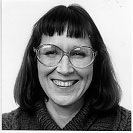Nationality United States | Name Martha Bell Spouse Lanny Bell | |
 | ||
Born April 27, 1941Philadelphia, Pennsylvania ( 1941-04-27 ) Thesis "The Tutankhamun Burnt Group from Gurob, Egypt: Bases for the Absolute Chronology of LH III A and B." (1991) Died November 12, 1991, New Jersey, United States Alma mater | ||
Martha Hope Rhoads Bell (April 27, 1941 – November 12, 1991) was an American archaeologist. Her specialty was Mycenaean imported pottery and imitations found in Egypt and Nubia, as well as Egyptian-Mycenaean interconnections in the New Kingdom and their implications for chronology.
Contents
Early life
Bell was born in Philadelphia, Pennsylvania on April 27, 1941.
Family
On September 22, 1968, Bell married Lanny Bell, an Oriental Institute Egyptologist.
Career
Bell earned her B.A. from Barnard College in History, and attended graduate school at the University of Pennsylvania from 1963–68. During 1966 and 1967 she worked at the American School of Classical Studies at Athens, visiting many sites in Greece and Crete. Initially, she was drawn to the study of Minoan religion. At the conclusion of 1967, she joined the University of Pennsylvania's excavations at Gordion under Rodney Young.
Her husband Lanny had begun work at the Ramesside tombs of Dra Abu el-Naga on the west bank at Luxor and she became the chief archaeologist for that expedition, participating in all three seasons (1970, '72, and '74). In 1977 her husband became the Director of the University of Chicago's Epigraphic Survey, based at Chicago House in Luxor, and she became effectively co-manager of the center. The Chicago House was a large installation, with extensive professional and facility staff. During the twelve years of the Bells' residency in Luxor, Martha Bell would carry out her own research, visiting numerous sites and museums, and taking part in Barry Kemp's 1982 excavations at the city site of ancient Akhetaten, at Tell el-Amarna.
Pennsylvania's professor of Egyptian archaeology, David O'Connor, had introduced Bell to Robert Merrillees, whose book The Cypriote Bronze Age Pottery found in Egypt inspired her to examine the range of Mycenaean pottery found at ancient Egyptian sites. She collected data on numerous new and unknown Mycenaean objects both in Egypt and in European collections and assembled data for a catalogue of Mycenaean pottery in the Cairo Museum. She developed an in-depth understanding of the Late Bronze Age Mycenaean and New Kingdom Egyptian interrelationships. An important goal was to help elucidate the dating of Late Helladic Pottery, finding the transition from LH IIIA to LH IIIB to have been in the 19th Dynasty, rather than earlier as had been previously suspected.
She was awarded her Ph.D. in Classical Archaeology at the University of Pennsylvania on May 21, 1991. The title of her dissertation is "The Tutankhamun Burnt Group from Gurob, Egypt: Bases for the Absolute Chronology of LH III A and B." It focuses on a re-dating of the finds at Gurob, a site whose chronology was in a shambles but which Aegeanists had placed much reliance.
Death
A few months after receiving her Ph.D., Bell was killed in a car crash in New Jersey, on November 12, 1991.
